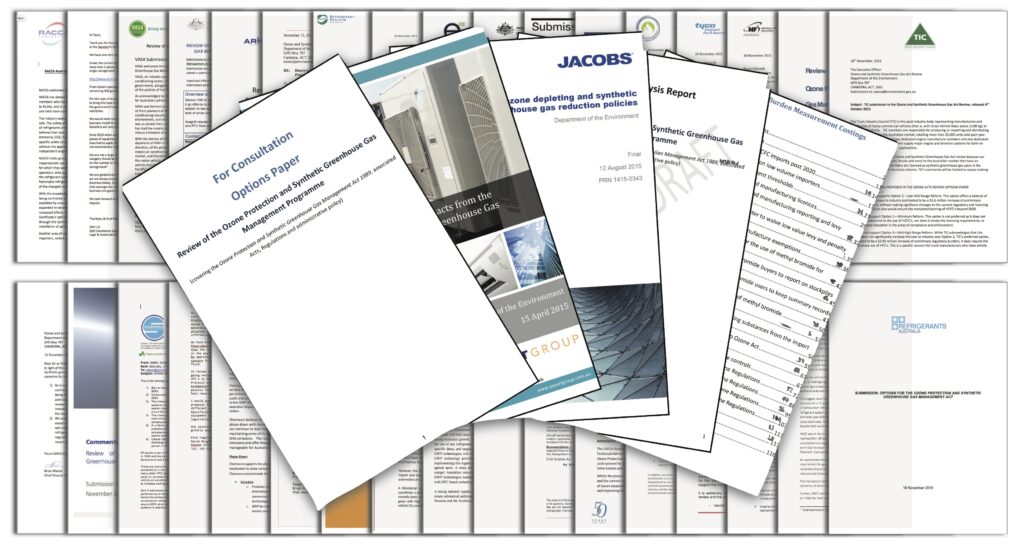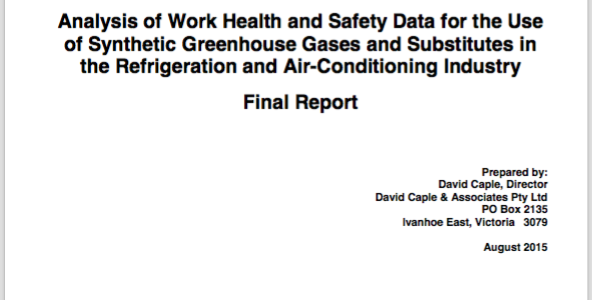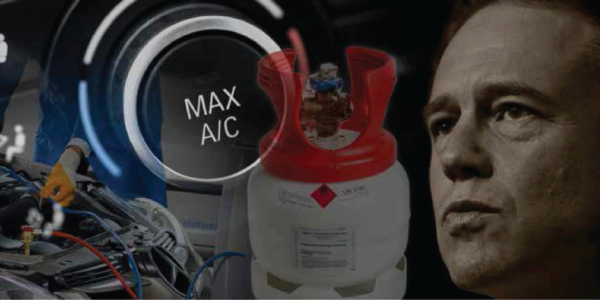Options paper gets 57 responses
- PostedPublished 21 February 2016
Ozone review options paper draws broad industry, community input
As expected, the Review of the Ozone Protection and Synthetic Greenhouse Gas Management Programme options paper consultation drew a large response from a broad range of industries, with 57 submissions sent to the Department of the Environment.

More than half the submissions explicitly supported an HFC phasedown, while the introduction of requirements for minimum maintenance and leak testing of equipment also received a thumbs up from a number of respondents, as did the idea of HFC equipment bans.
Improvements to end-use licensing were unanimously supported, with a number of respondents preferring minor amendments, wanting improved emission reductions and desiring a restructure of the scheme into one license.
Meanwhile, switching to an industry-led, voluntary licensing scheme was opposed by a number of submissions and supported by none.
Regulation and licensing of additional low global warming potential (GWP) refrigerants such as R1234yf and hydrocarbons was not in the scope of the options paper, despite broad industry support. This led to a number of submissions – including VASA’s – reiterating the need for regulation of all refrigerants.
The Truck Industry Council (TIC), which last year issued a warning about the use of hydrocarbon refrigerants, highlighted in its submission that it was “aware that highly flammable refrigerant gases are being used as substitutes to HFCs”.
“This is a potentially very dangerous practice for an automotive air conditioning system. Any changes to the Ozone and Synthetic Greenhouse Gas Act/regulation/s should ensure that the procedure of replacing the originally specified non, or low, flammability refrigerant gas with a highly flammable gas is minimised or eliminated.”
Similarly, a submission by the Victorian Automotive Chamber of Commerce (VACC) largely focussed on the issue of hydrocarbon refrigerant retrofits and said it would “like to see the introduction of Reclaim Licence requirements for purchasers of hydrocarbon refrigerants”.
“We acknowledge that the input of hydrocarbon gas is not able to be constitutionally regulated, however many instances of filling a vehicle with hydrocarbon require a technician to expel the existing refrigerant. The technician has no way of knowing if the vehicle is filled with hydrocarbon at present and so could well be contravening reclaim regulation.”
The VACC also fielded the idea of a system-based license that would regulate people working on equipment regardless of the type of refrigerant used.
As administrator of the current licensing scheme, the Australian Refrigeration Council made a number of interesting suggestions:
- Specific training requirements for handling and working with flammable and/or toxic and/or high-pressure refrigerants, including recovery
- Specific Licences and Trading Authorisations for the use and sale of flammable and/or toxic and/or high-pressure refrigerants
- The banning of the retrofitting of installed equipment with refrigerant for which it was not originally designed without the manufacturer’s or engineering approval (as approved by Government regulator – which should be by way of licensed through the ARC).
- A risk assessment is to be undertaken prior to any change of refrigerant type by a ‘competent person’ and licensed (by the ARC).
- Mandatory labelling of refrigerant type as part of servicing. This should apply to all refrigerants, not just ODS and SGG based refrigerants.
- Strengthen requirements around end of life vehicles which require refrigerant to be removed where they are declared ‘Statutory write offs’.
- Mandatory testing of all refrigerant prior to recovery.
The ARC also “agrees with many public submissions and the overall Industry position that the scope of the Act be broadened to include additional gasses which are neither ODS nor SGG but are used as refrigerant, including those with low or no GWP”.
“The transition to these products will have a profound impact on direct and indirect emissions, on the safety of technicians, end users and the general public.”
Like a number of industry organisations, the ARC pulled the Department of the Environment up on its view that safety falls outside its remit and that of the legislation under review.
“This seems to neglect the fact that it is responsible for creating a legislative environment that promote the use of refrigerant with a higher risk to safety than that of contemporary ODS and SGG (non-flammable and non-toxic) refrigerants,” says the ARC submission.
“There is broad Industry support for the ARC scheme to be broadened to incorporate all refrigerants.”
The Federal Chamber of Automotive Industries (FCAI) opposed import and manufacture bans of automotive equipment using high-GWP refrigerants, arguing that the Ministerial Forum on Vehicle Emissions should review the methods of an HFC phase-out in automotive “as part of broader vehicle CO2 reduction initiatives”.
VASA’s submission pointed out that HFC equipment bans are unlikely to be necessary as all cars sold in Australia will be imported following the closure of Ford, Toyota and Holden manufacturing at the end of 2017. By then, most cars manufactured overseas will have transitioned to low GWP refrigerants such as R1234yf or carbon dioxide.
- CategoriesIn SightGlass
- TagsOzone Act review, SightGlass News Issue 5



